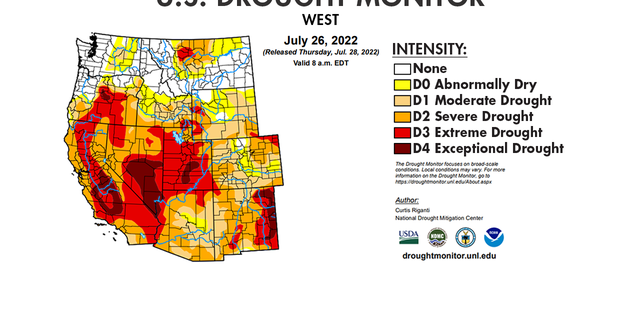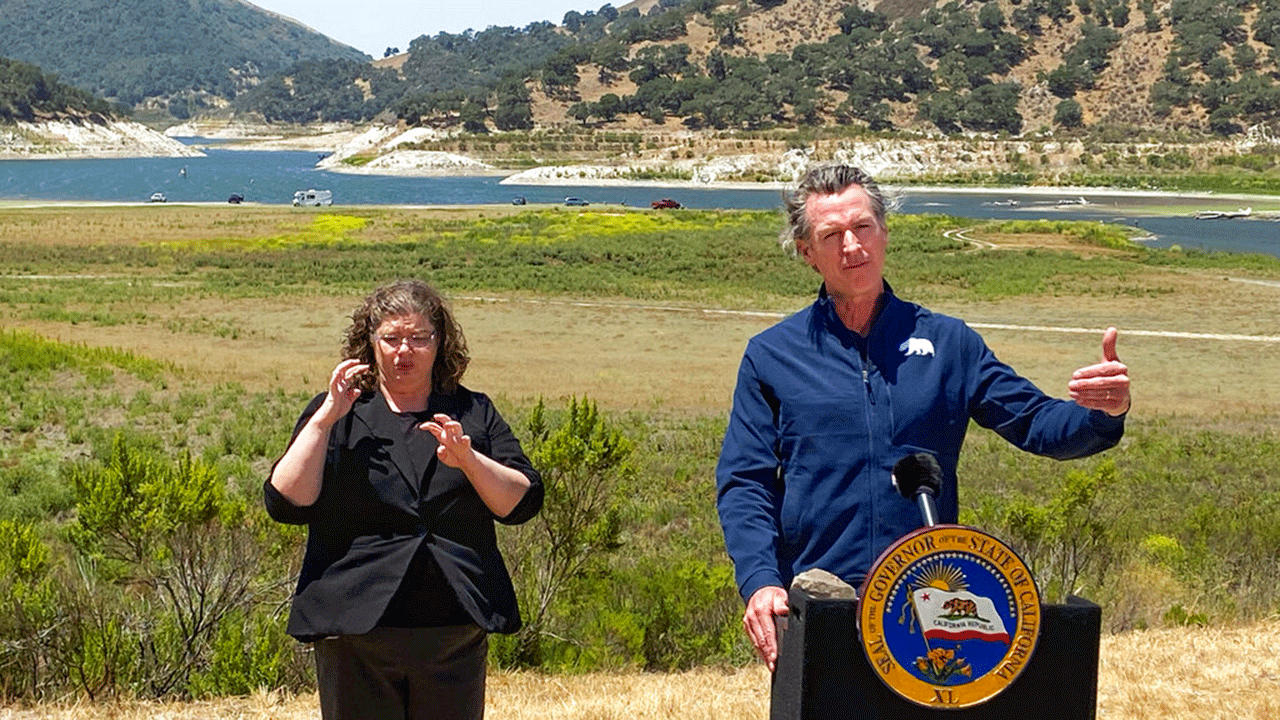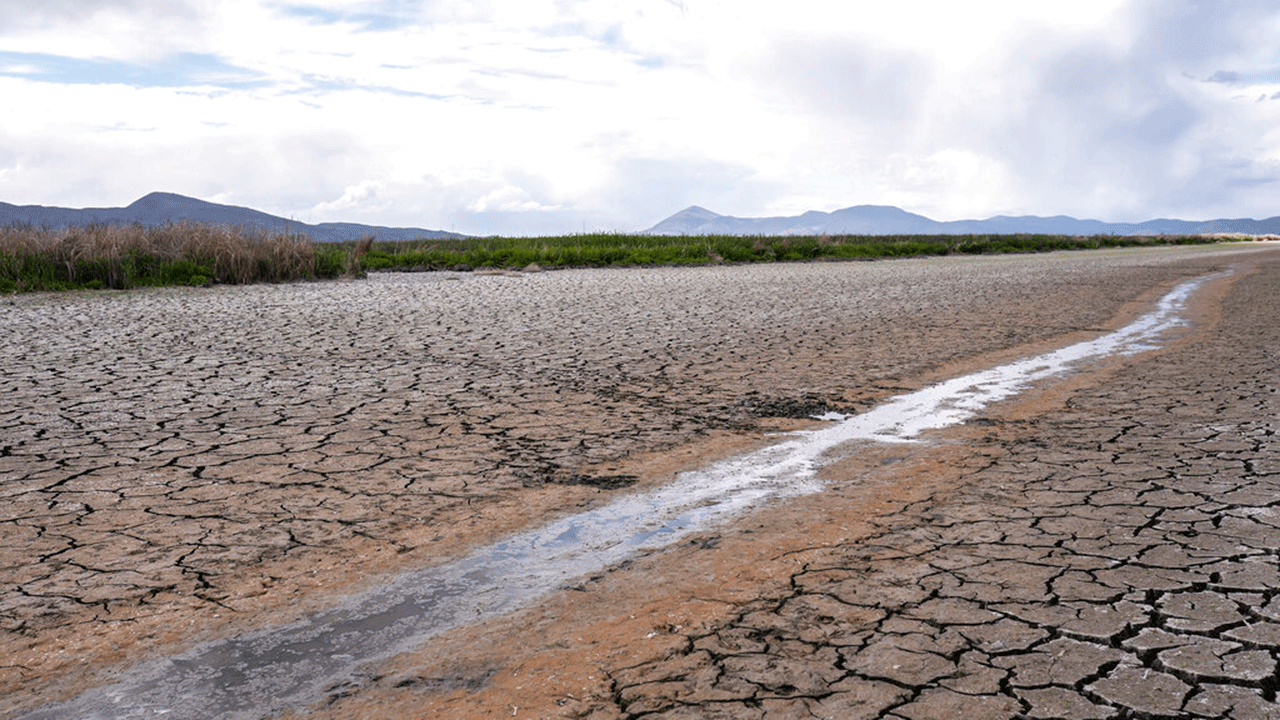Gavin Newsom criticized over handling of California drought as farms languish
Gov. Gavin Newsom has mishandled California’s severe, years-long drought during his time in office, while the state’s farms face diminishing yields, House Minority Leader Kevin McCarthy, R-Calif., told Fox News.
“I think Gavin Newsom has failed when it comes to water,” McCarthy, who represents a district in California’s Central Valley, said.
For the second time in nine years, California is facing a generational drought – a period of dryness so severe, they’re typically thought to only occur once per generation, according to Erik Ekdahl, the California State Water Resources Control Board’s deputy director for water rights. The Golden State has also endured a megadrought – a drought that lasts longer than 20 years – since 2000, Ekdahl said.
“I think the state has actually done some remarkably good planning and preparation and implementation for drought,” Ekdahl told Fox News.
DROUGHT-PARCHED WEST LOOKS TO MIGHTY MISSISSIPPI FOR SOLUTIONS TO WATER CRISIS
Regardless, farmers’ yields and, consequently, their businesses, are suffering, said Sam Parnagian, a third generation California Central Valley farmer. Over one-third of the country’s vegetables and two-thirds of its fruits and nuts are grown in California, according to the state Department of Food and Agriculture.
“You’ll go see tens of thousands of acres that used to have nuts, almonds, pistachios, and they’re just bare,” Parnagian told Fox News. “It’s just all dust.”
California saw a brief reprieve from drought in 2019, just months after Newsom took office, according to the University of Nebraska-Lincoln’s Drought Center. But by 2021, the state was once again plunged into severe dryness on a wide scale – and it could get worse.
“There’s a very real prospect for a fourth year and potentially a fifth year of drought,” Ekdahl told Fox News.
Newsom, a Democrat, needed to use the drought-free period to prepare, McCarthy said.
“You should store it in the abundant years to have it for the years coming forward when it comes to drought,” McCarthy, a Republican, told Fox News. “That would show you good management.”
McCarthy’s district includes part of Kern County, 70% of which is characterized as facing “exceptional” drought conditions, according to the National Oceanic and Atmospheric Administration. Exceptional drought, the most intense and devastating type of drought, can lead to widespread wildlife death, the removal of orchards, increased chances of wildfire and low crop yields, according to NOAA.
LAS VEGAS ‘WATER COPS’ PATROL FOR WATER WASTERS AMID UNPRECEDENTED DROUGHT

Newsom outlined a 142-step plan in 2020 to make California more resilient to drought. It included long-term projects such as new water storage construction, surveying for new water sources and the deconstruction of dams.
Many of those haven’t been built, according to a progress report published in January. Ekdahl said many of the water projects could take years to be completed.
“They haven’t built any new water storage, no new dams,” McCarthy told Fox News. They continue to let water go out into the ocean.”
Newsom’s office did not respond to a request for comment.
“The Governor has worked with the legislature to invest $8 billion to implement the strategies in the Water Resilience Portfolio, which focuses on diversifying our water supplies, enhancing ecosystems, improving infrastructure and ensuring California is better able to manage hotter and drier weather” Erin Mellon, a Newsom spokesperson, told the Los Angeles Times in July.
CALIFORNIA REDUCES SUPPLIES TO WATER AGENCIES AMID DROUGHT
But others agreed with McCarthy.
“These days, the Newsom administration and Legislature have done little more than engage in water shaming,” Steven Greenhut, the R Street Institute’s western region director, wrote in the Orange County Register. “Where are the plans to bolster our water-storage capacities?”
Newsom in 2021 asked Californians to voluntarily cut water use by 15%, but in March 2022, usage increased by 19%. The governor threatened to make restrictions mandatory in response.
“There’s no need to shame Westerners for their water usage, but there is reason to shame our officials for not doing their part to upgrade and build new water infrastructure,” Greenhut wrote, noting that Newsom should use California’s nearly $100 billion surplus to invest in water facilities. He also blamed former Gov. Jerry Brown for inaction during another drought reprieve when he was in office.

Yet Newsom has also faced criticism for not imposing harsher restrictions.
“We know it’s an election year and Newsom doesn’t want to anger voters, but failing to impose mandatory water cuts in the midst of this crisis demonstrates a stunning lack of leadership,” the Mercury News and East Bay Times editorial boards wrote.
HOUSE APPROVES BILL TO HELP WEST FIGHT WILDFIRES, DROUGHT
About 80% of water use in California is used for agriculture, according to the state Department of Water Resources.
“We’re one of the most fertile lands in all the world, and we should be using it to maximize our industry here in California and food for the world,” Parnagian told Fox News.
But the drought has even restricted farmers’ water usage, consequently lowering their economic output, according to Ekdahl.
Some livestock farmers have even had to sell their cattle, a move that could cause beef prices to surge, FOX Business previously reported.

“You’re seeing that people are starting to farm to the water that’s available,” Parnagian told Fox News. “And in doing that, we’re limited on the crops we can grow. We’re limited on the yields that we can get.”
California rice producers are weighing importing from Japan and South Korea as domestic production has severely dropped, S&P Global Commodity Insights reported.
The former climate and conservation manager for the California State Water Resources Control Board, Max Gomberg, also felt Newsom wasn’t properly handling water resiliency. But Gomberg, who said he left his post because the governor wasn’t aggressive enough on climate change, felt agriculture has received preferential treatment.

“There are the zillions of acres of almonds and grapes. It’s not sustainable,” Gomberg told the LA Times. “Everyone knows it’s not sustainable, just like everyone knows the amount of withdrawals from the shrinking Colorado River system are not sustainable.”
Meanwhile, only five of California’s 17 major reservoirs, which provide water for agricultural use, are over 50% capacity, and eight are below 35% capacity, according to the California Department of Water Resources.
“What we’re seeing just over the last nine years or so, seven of the last nine years have been dry or critically dry,” Ekdahl told Fox News. “That’s just put long-term stress on our reservoirs, how we use water and ecosystems and people that depend on it.”
Read the full article Here


